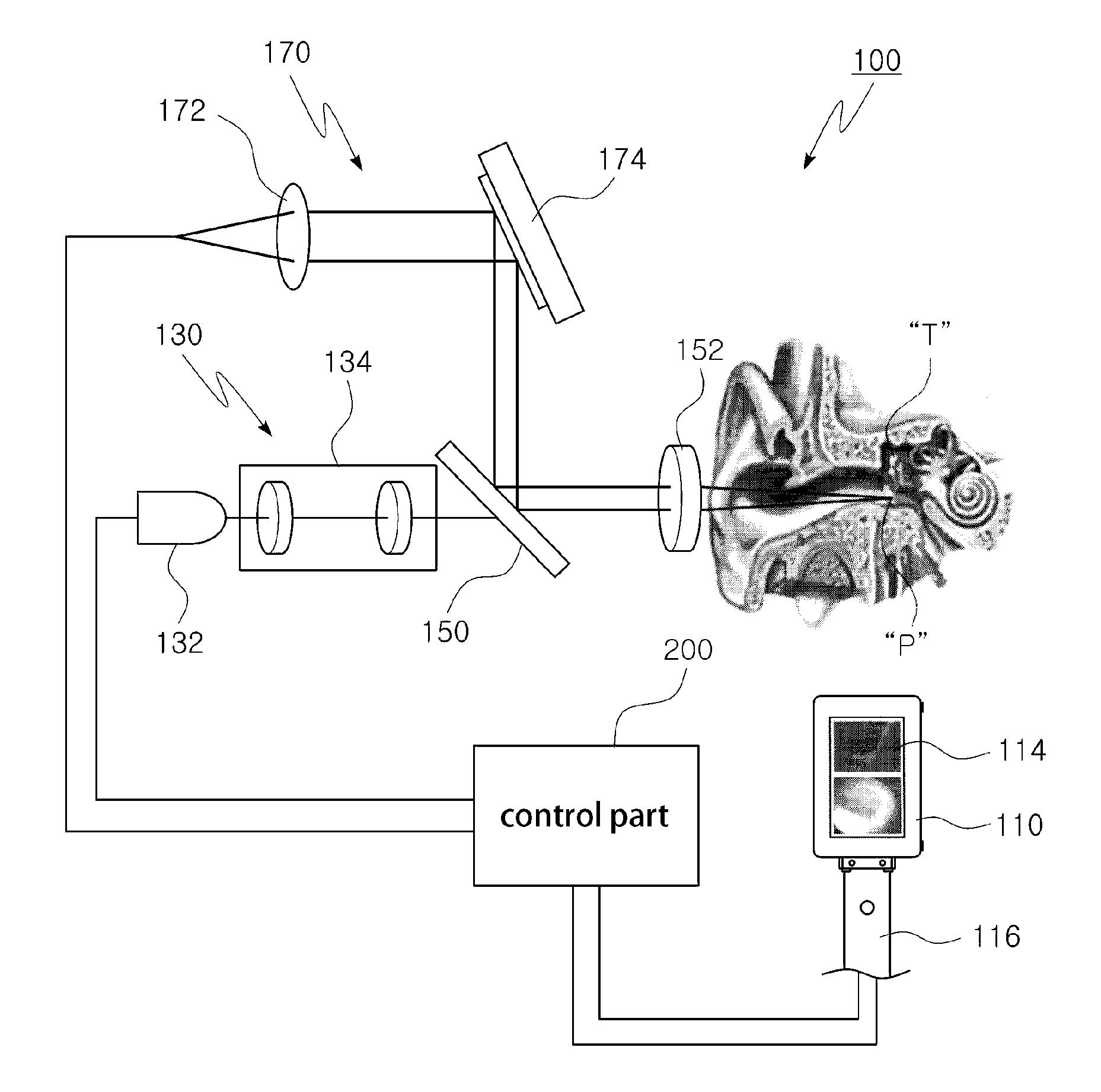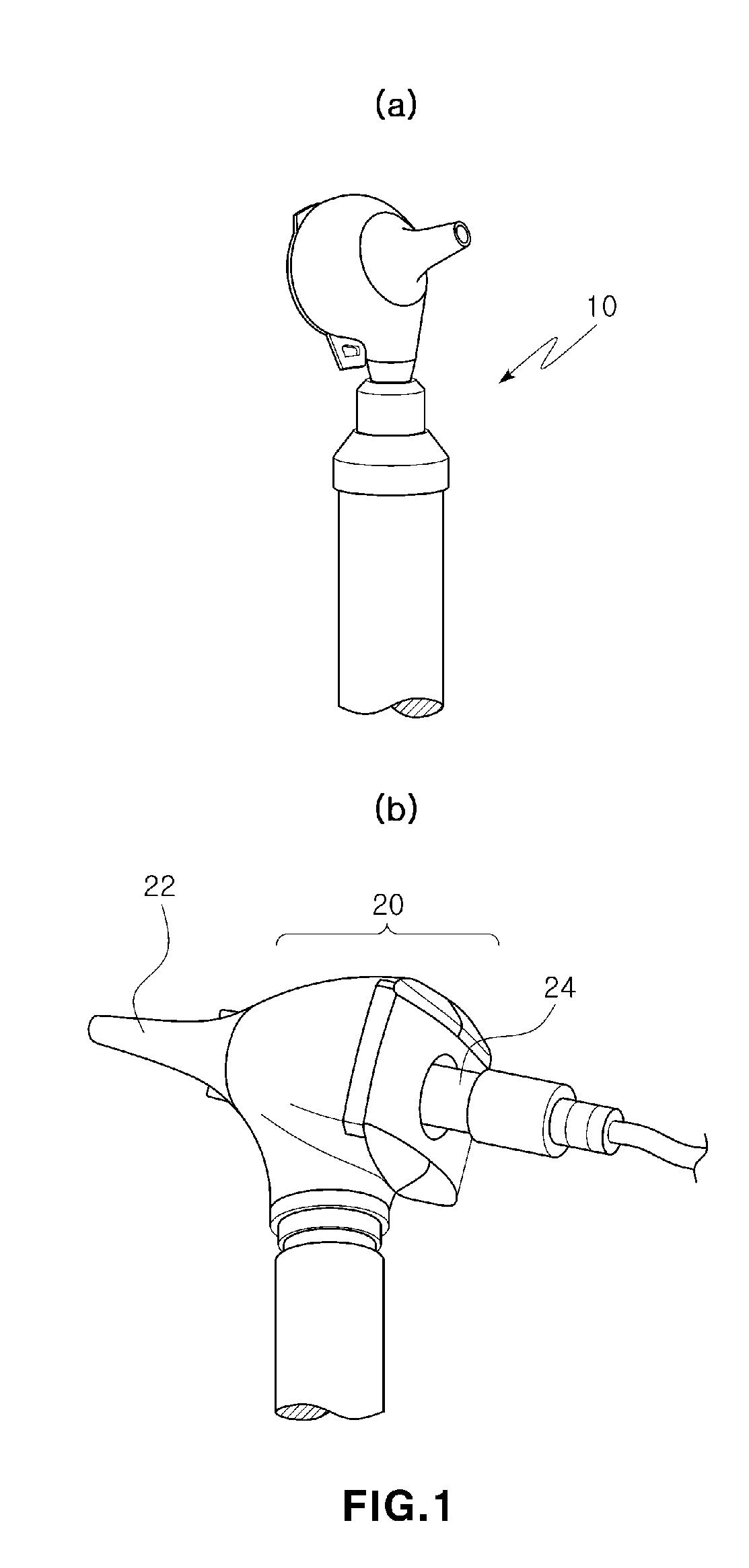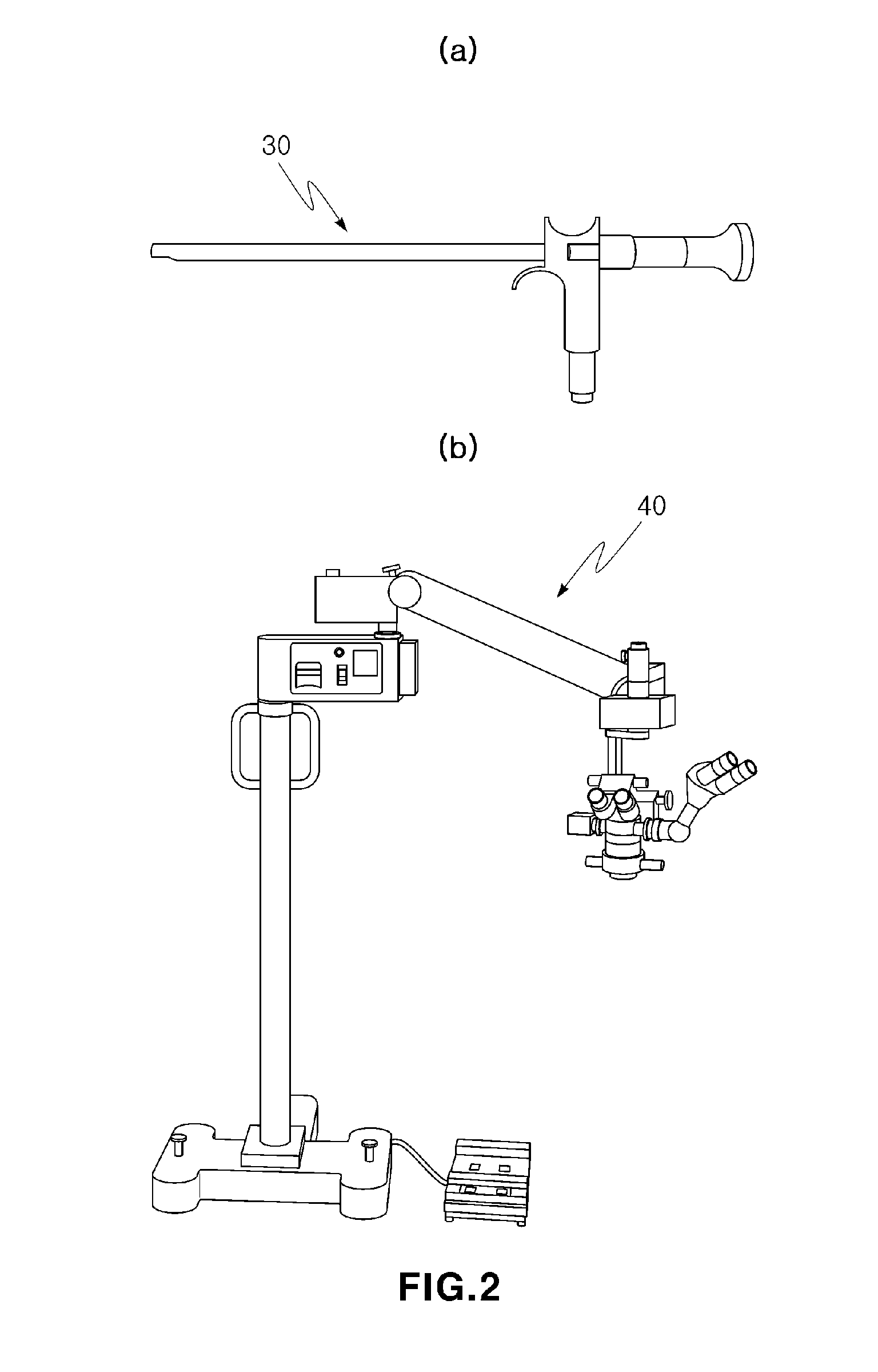Optical tomographic imaging otoscope with integrated display and diagnosis
a tomographic imaging and integrated technology, applied in the field of otoscopes that examine only the condition of the eardrum, can solve the problems of difficult to differentiate between bacterial and general infections, difficult to diagnose the causes of otitis media defection, so as to simplify the disease-diagnosis procedure and improve resolution. , the effect of reducing the error in related diagnoses
- Summary
- Abstract
- Description
- Claims
- Application Information
AI Technical Summary
Benefits of technology
Problems solved by technology
Method used
Image
Examples
Embodiment Construction
[0040]Reference will now be made in detail to various embodiments of the present invention, examples of which are illustrated in the accompanying drawings and described below.
[0041]A diagnosis-and-display integrated optical tomographic imaging otoscope 100 according to the present invention is an apparatus for examining otitis media, and as shown in FIG. 3 to FIG. 6, includes a hollow casing 110 having a certain size.
[0042]The casing 110 is configured, preferably, as a rectangular box. An ear specular 112 is disposed on the front side, a display 114 having a liquid crystal display (LCD) is disposed on the rear side, and a manipulating handle 116 is disposed on the underside.
[0043]In addition, the diagnosis-and-display integrated optical tomographic imaging otoscope 100 according to the present invention also includes a image-photographing part which has a charge-coupled device (CCD) camera 132 inside the casing 110, and takes an image of the ear drum of a patient through the ear spe...
PUM
 Login to View More
Login to View More Abstract
Description
Claims
Application Information
 Login to View More
Login to View More - R&D
- Intellectual Property
- Life Sciences
- Materials
- Tech Scout
- Unparalleled Data Quality
- Higher Quality Content
- 60% Fewer Hallucinations
Browse by: Latest US Patents, China's latest patents, Technical Efficacy Thesaurus, Application Domain, Technology Topic, Popular Technical Reports.
© 2025 PatSnap. All rights reserved.Legal|Privacy policy|Modern Slavery Act Transparency Statement|Sitemap|About US| Contact US: help@patsnap.com



